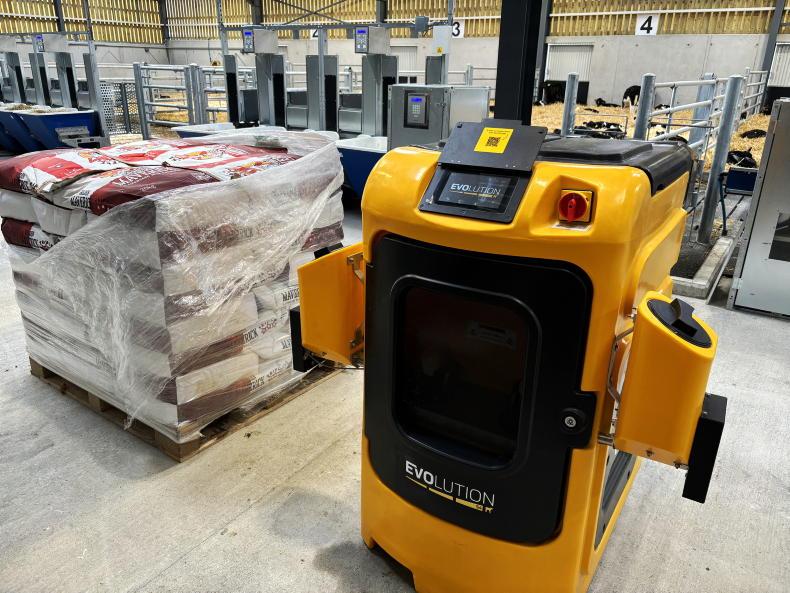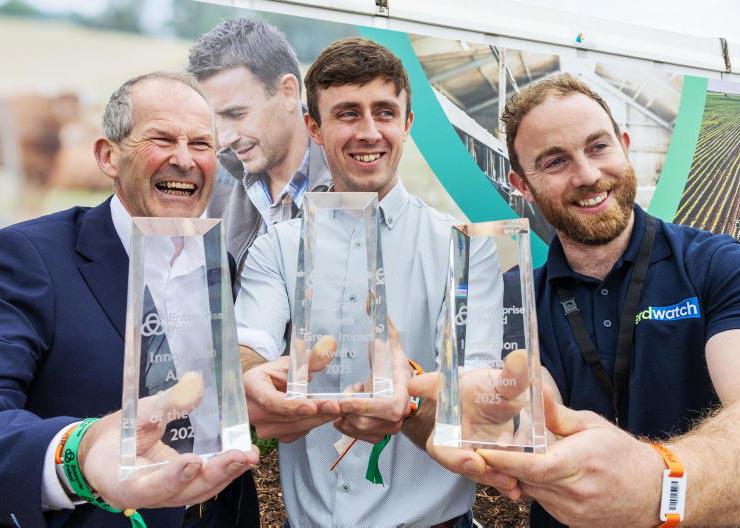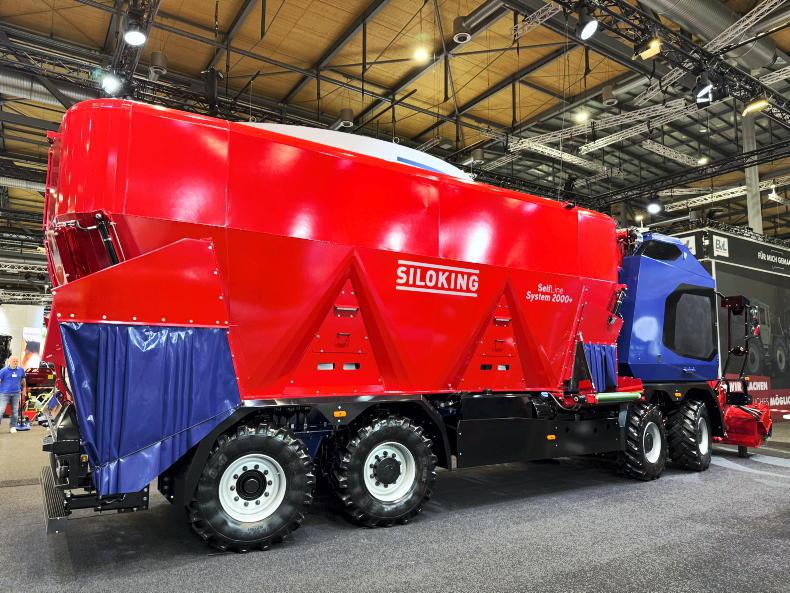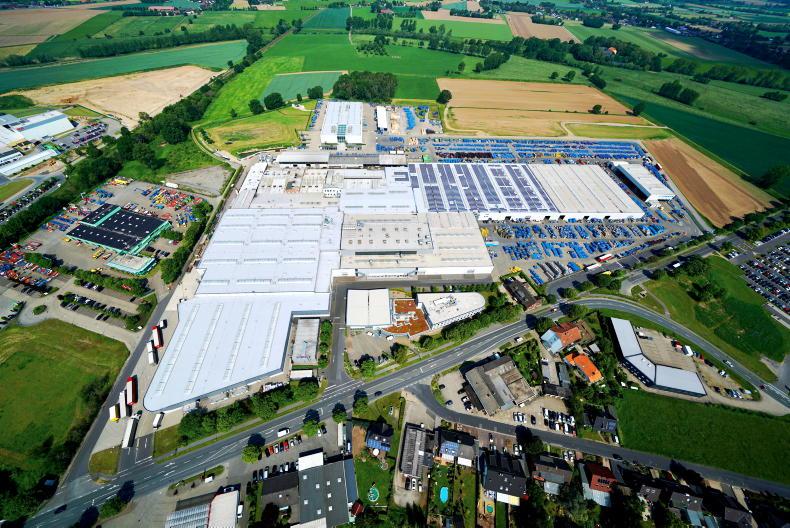With 2,803 exhibitors, 450,000 visitors and over 90 acres of exhibition floor space in 23 halls, Agritechnica is Europe’s biggest machinery show.
It took place in Hannover, Germany from 12 to 18 November and drew crowds from around the globe, who were keen to see what was fresh and new in terms of agricultural machinery and technology.
Below are some of the award-winning pieces of technology that were on display.
Mars: Mobile Agricultural Robot Swarms
AGCO GmbH – Fendt
Nearly all technological advances in history have shared one common ideology : that bigger is better. However, Fendt has come up with a way to change this.
It has developed small, lightweight remote-controlled robots that work as part of a team to sow maize in a more cost-efficient way. The farmer transports the team to the field and through an automated driving system they sow seeds.
They emit virtually no noise, meaning they can operate in near residential areas at night. They weigh only 40kg, meaning there is a drastic reduction in soil compaction and as they are autonomous they can be operated 24 hours a day, meaning increased output over time.
Sensosafe
Pöttinger Landtechnik
As well as being a valuable feed source for farmers, silage offers the perfect sheltering place for foxes, deer, rabbits and a multitude of other species.
So large amounts of wildlife are caught up in the blades of silage mowers every year, causing either serious injury or death (It is believed in Germany over 100,000 fawns alone are killed by mowers annually).
As well as being harmful to the animals themselves, the knock-on effects of having carcases mixed through a crop can be damaging to both farmers and their livestock, as it can contaminate the crop, reducing its value, as well as posing a health threat to livestock.
To overcome this, PÖttinger has developed Sensosafe, which can detect wildlife hidden in the sward using an infrared sensor fitted in the header of the mower. As soon as an animal is detected, the hydraulic system in the header is signalled to raise the unit, saving the animal and preventing contamination of the crop.
The sensors are able to identify animals in daylight while being able to distinguish between obstacles such as molehills.
SmartService 4.0
Amazon Works
If a piece of equipment breaks down, it can mean long delays waiting for mechanics to come and fix it, leading to the loss of invaluable working hours.
However, Amazone Smart Service is an ingenious way to massively reduce the time taken to fix machinery. It uses virtual reality and expanded reality technology to develop the learning and training processes for the end customer and customer service, and to support customers and service technicians during maintenance work.
Smart-Service 4.0 enables both multimedia-based, technical real-time support from service specialists for service technicians, as well as in the field of applications technology from service consultants for end customers. With real-time support, the service specialist/service consultant sees the activities of the service technician/end customer and can provide corresponding warnings and/or instructions. This would not be the case purely with support over the phone.
Telematics Large Vehicle Alert System
Claas distribution company
If you’ve ever driven on Irish country roads, then more than likely at some stage you will have got stuck behind a tractor. Given the nature of roads in this country, there are few safe places to either overtake the tractor or for the tractor to pull in.
In order to address such issues, Claas is working on a telematics large vehicle alert system. This informs drivers of a network of cars of the position of agricultural machinery. The location of the agricultural machines is transmitted via telematics or via a Claas app to the assistance systems of cars and trucks. This enables drivers to avoid the creation of scenarios which could result in possible road fatalities.
Smart Crop Damage Identification
Agrocom Poland
It can be notoriously difficult to estimate the damage done to a crop either by hunting or weather such as hailstorms, frost and rain.
However, a 3D imaging process, such as the intelligent identification system for crop damage caused by game called Smart Crop Damage Identification (SCDI), provides a solution.
It can record damage done at the end of the vegetation period and make an assessment on any harm done. It works with 3D images taken by drones at a low height.
The system reduces the working time required by farmers when checking stocks, when looking after animals and for quality assurance.
Read more
Agri tech: the up sides of vertical farming
With 2,803 exhibitors, 450,000 visitors and over 90 acres of exhibition floor space in 23 halls, Agritechnica is Europe’s biggest machinery show.
It took place in Hannover, Germany from 12 to 18 November and drew crowds from around the globe, who were keen to see what was fresh and new in terms of agricultural machinery and technology.
Below are some of the award-winning pieces of technology that were on display.
Mars: Mobile Agricultural Robot Swarms
AGCO GmbH – Fendt
Nearly all technological advances in history have shared one common ideology : that bigger is better. However, Fendt has come up with a way to change this.
It has developed small, lightweight remote-controlled robots that work as part of a team to sow maize in a more cost-efficient way. The farmer transports the team to the field and through an automated driving system they sow seeds.
They emit virtually no noise, meaning they can operate in near residential areas at night. They weigh only 40kg, meaning there is a drastic reduction in soil compaction and as they are autonomous they can be operated 24 hours a day, meaning increased output over time.
Sensosafe
Pöttinger Landtechnik
As well as being a valuable feed source for farmers, silage offers the perfect sheltering place for foxes, deer, rabbits and a multitude of other species.
So large amounts of wildlife are caught up in the blades of silage mowers every year, causing either serious injury or death (It is believed in Germany over 100,000 fawns alone are killed by mowers annually).
As well as being harmful to the animals themselves, the knock-on effects of having carcases mixed through a crop can be damaging to both farmers and their livestock, as it can contaminate the crop, reducing its value, as well as posing a health threat to livestock.
To overcome this, PÖttinger has developed Sensosafe, which can detect wildlife hidden in the sward using an infrared sensor fitted in the header of the mower. As soon as an animal is detected, the hydraulic system in the header is signalled to raise the unit, saving the animal and preventing contamination of the crop.
The sensors are able to identify animals in daylight while being able to distinguish between obstacles such as molehills.
SmartService 4.0
Amazon Works
If a piece of equipment breaks down, it can mean long delays waiting for mechanics to come and fix it, leading to the loss of invaluable working hours.
However, Amazone Smart Service is an ingenious way to massively reduce the time taken to fix machinery. It uses virtual reality and expanded reality technology to develop the learning and training processes for the end customer and customer service, and to support customers and service technicians during maintenance work.
Smart-Service 4.0 enables both multimedia-based, technical real-time support from service specialists for service technicians, as well as in the field of applications technology from service consultants for end customers. With real-time support, the service specialist/service consultant sees the activities of the service technician/end customer and can provide corresponding warnings and/or instructions. This would not be the case purely with support over the phone.
Telematics Large Vehicle Alert System
Claas distribution company
If you’ve ever driven on Irish country roads, then more than likely at some stage you will have got stuck behind a tractor. Given the nature of roads in this country, there are few safe places to either overtake the tractor or for the tractor to pull in.
In order to address such issues, Claas is working on a telematics large vehicle alert system. This informs drivers of a network of cars of the position of agricultural machinery. The location of the agricultural machines is transmitted via telematics or via a Claas app to the assistance systems of cars and trucks. This enables drivers to avoid the creation of scenarios which could result in possible road fatalities.
Smart Crop Damage Identification
Agrocom Poland
It can be notoriously difficult to estimate the damage done to a crop either by hunting or weather such as hailstorms, frost and rain.
However, a 3D imaging process, such as the intelligent identification system for crop damage caused by game called Smart Crop Damage Identification (SCDI), provides a solution.
It can record damage done at the end of the vegetation period and make an assessment on any harm done. It works with 3D images taken by drones at a low height.
The system reduces the working time required by farmers when checking stocks, when looking after animals and for quality assurance.
Read more
Agri tech: the up sides of vertical farming












SHARING OPTIONS